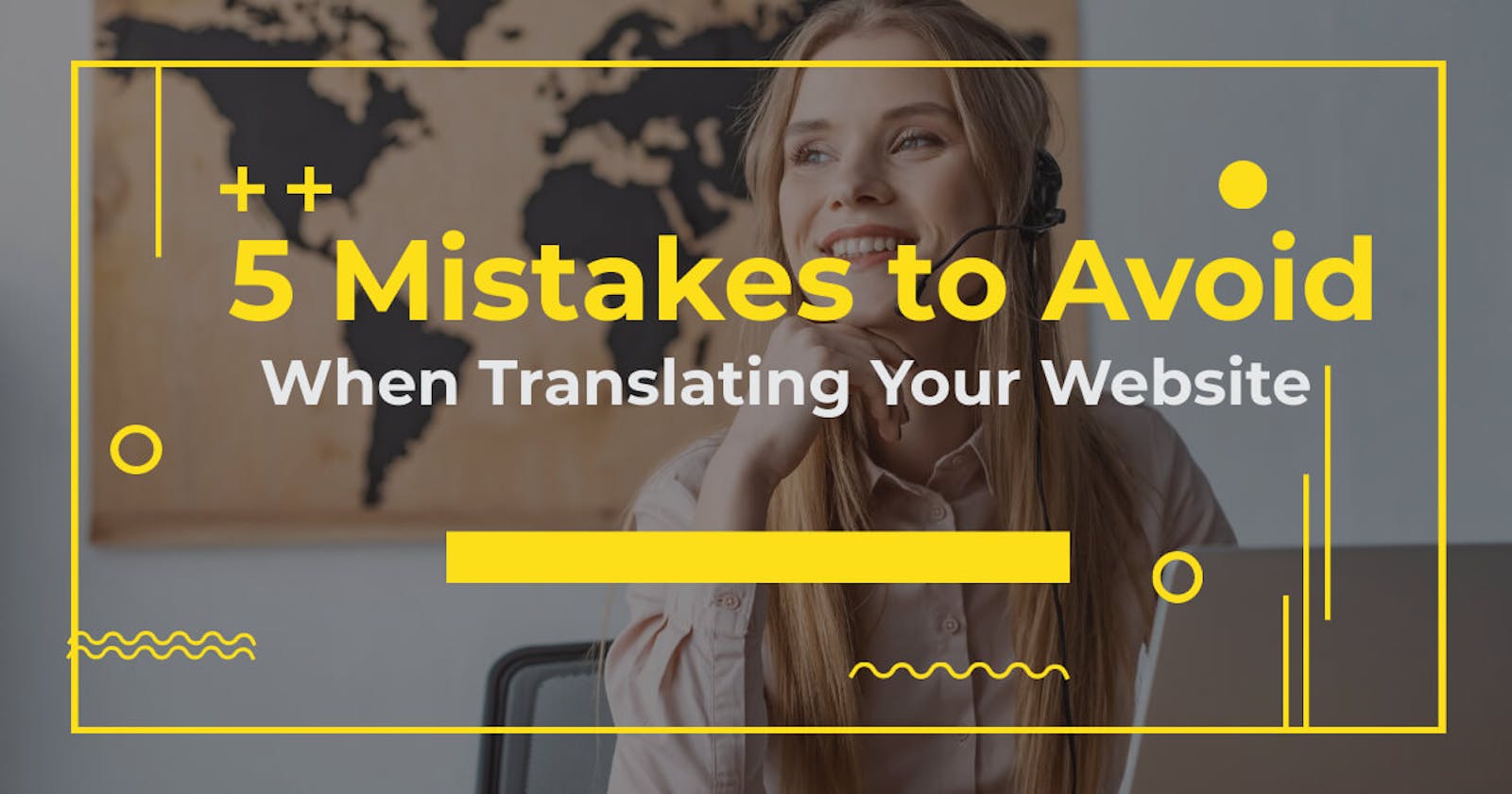There are a few misconceptions surrounding the translation business, and more specifically, website translation, when you want to reach your international audience.
Let's start from the end.
These are the 5 rules you should follow for a successful international website implementation:
- Each website is different
- You need a global strategy
- Think about what matters to your international audience
- Work together with your professional linguists
- Keep a communication channel open
The 1st rule of translation club is: there are no fixed rules. Your website will be different to mine. And so will your goals.
Rule number 2 - Your international business needs to have well defined goals, which is why you need a translation, not the other way around. Unless you start with a global strategy, your translation efforts are bound to fail.
Number 3 - Different audiences have different needs. Perhaps you don’t need to translate your whole website. Those old blog posts about a trade fair in Germany might not interest your Spanish audience. Or perhaps they will. It's hard to say. It's your call.
Number 4 - Although you – as a business owner – are in charge of defining your strategy, you should work with us, your professional linguists, when it comes down to actually translating your site into another language. If you don’t manage your site, then let us talk to the person who does.
And just speaking once at the beginning won't be enough either (number 5): keep a channel open so we can ask questions and you (or someone on your behalf) can answer.
Now, don't say I didn't warn you: we are going to be talking about some pretty boring stuff… Web localization is far from exciting. It's a very specific business process that you probably don't want to know about in detail. However, a little knowledge could spare you a few headaches when selling your service or product in foreign markets and when dealing with translators.
Each web site is different
Web localization is the process of translating and adapting a website for a market different to the original. So, we need to make two things clear:
- What is a website?
- What is localization?
First of all, let's talk about why there are no magic formulas…
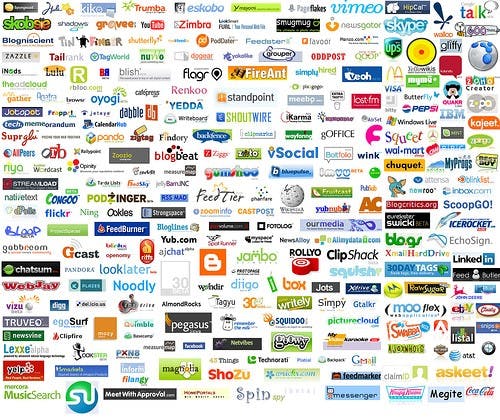
This is an old image I found years ago, and it serves a double purpose:
- it's an example of just how many different sites there really are
- it's also an example of how quick those sites appear and disappear
You probably recognize a few you used to use that are no longer active…
So a site is – by nature – an organism that is born, lives and dies. The same is true for translations.
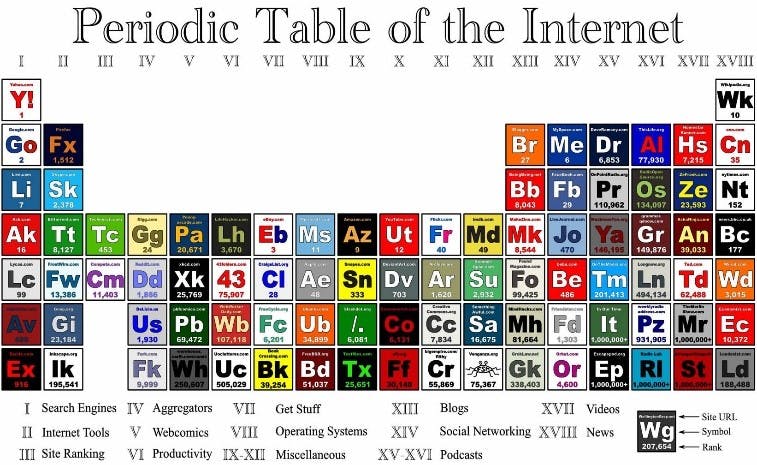
Here is another fun image: someone tried to draw up a periodic table of the internet. It's kind of a joke, of course, because sites tend to resist almost any attempts at categorization.
However, what does this mean for us? It means that it's really hard to pin down a "one-size-fits-all" solution when it comes to website translation.
From static web sites…
But why is it so difficult?
Because websites can be created in so many different ways, it's hard to find common solutions. If everything were HTML (if only), we could easily download all the HTML files through FTP, translate them, upload them again and: ta-dah! You have your translated web site.
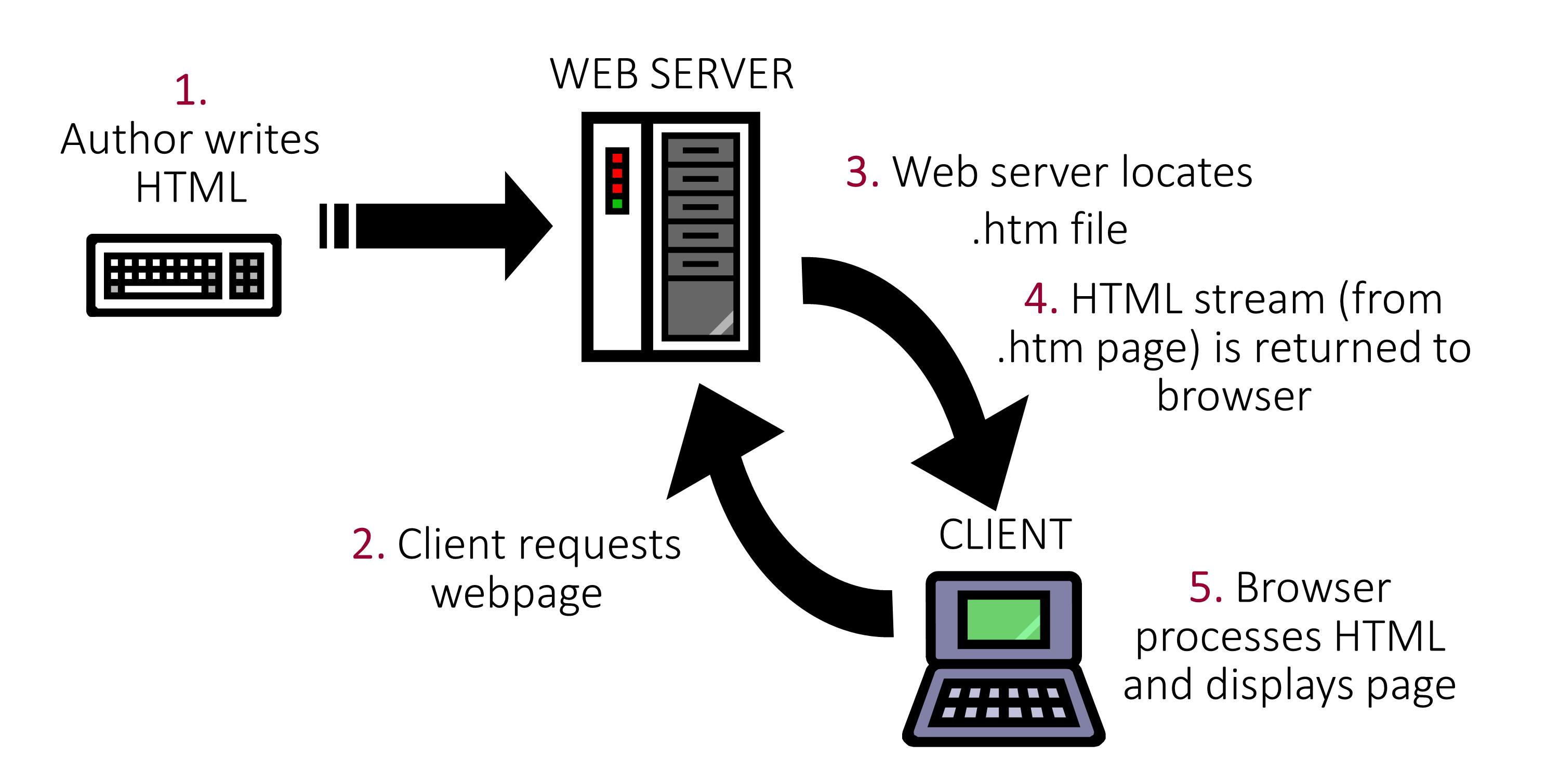
An author used to write a few HTML documents, upload them onto a web server. When a user wanted to visit that site, the web server simply served the *.htm files to the client, and the browser processed HTML and rendered the page.
Alas, nowadays things are a bit more complicated than that.
…to dynamic web sites…
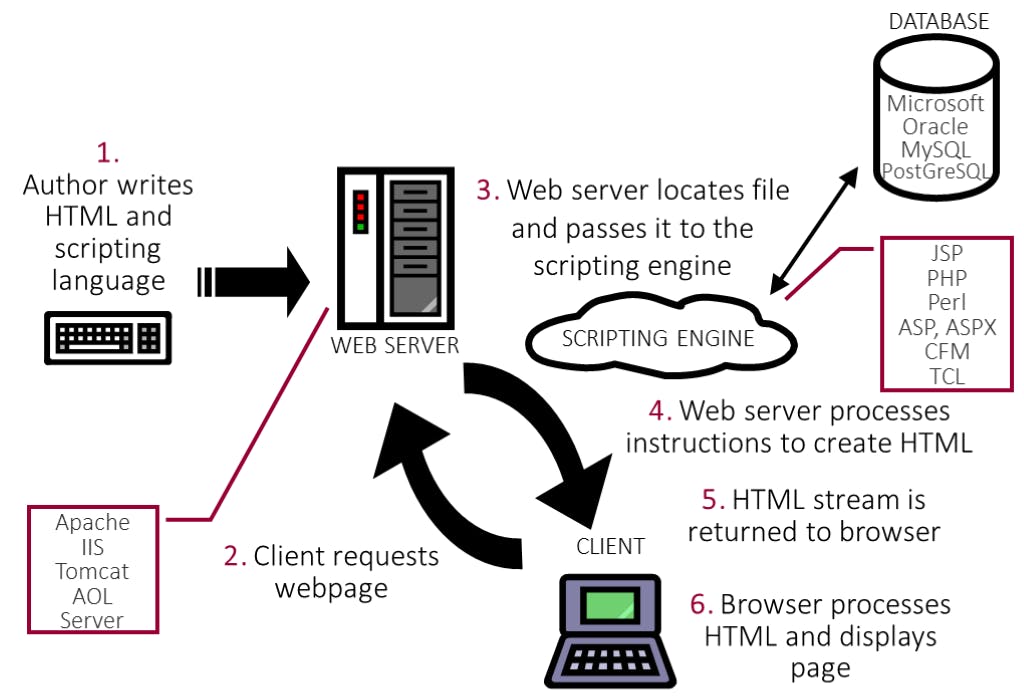
The content to translate is scattered among PHP, ASP files and one or more databases, sometimes it's even hidden in Javascript files. Someone must take all these pieces of content and send them to the translator. But who? The webmaster? The business owner? The marketing department in charge of the texts? And how do you do it?
…to web applications
And what about web applications? Those are websites too, aren't they?
The right approach to localization depends on the technology upon which your website is built.
If you're using WordPress, you have a few options.
If you're using Joomla, others.
Drupal has its own plugins, etc.
If you haven't actually created your website yet and plan to expand your business to other markets, take your time to choose a tool or a platform with good globalization features, otherwise you will regret it later.
On top of that, you should also consider that your website is likely to be viewed on different devices, so responsiveness is another factor to add to the mix.
Web localization workflow
So far, I have raised a lot of questions, and given almost no answers. Well, the answer lies in the following diagram.
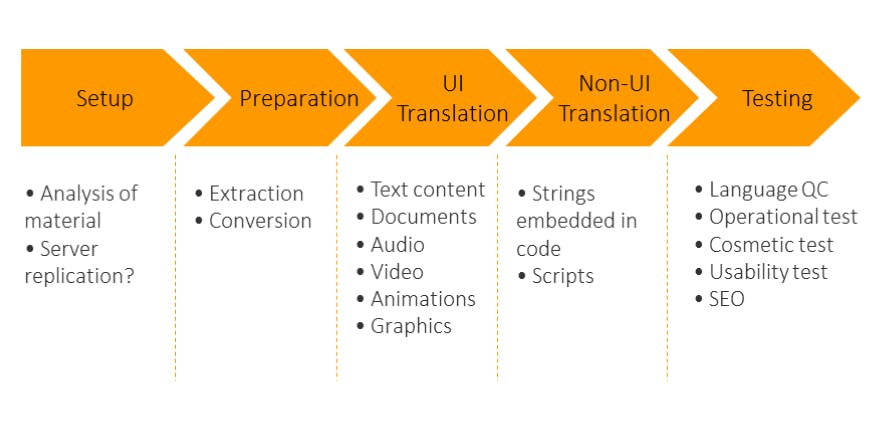
This diagram shows a basic web localization workflow, the point being that translating a website is quite different to translating a Word document. And you – as the person commissioning the job – need to be aware of this difference.
We won't drag you through the entire process here, but let's just say that the most critical phase is the extraction, and then the import - when all translated content is uploaded back onto your site.
Sometimes a web L10n project can be "downgraded" to a simple translation project, if the translator manages to get the texts extracted by the client. E.g.: an Excel list, a plain *.txt file, an .mdb or .dbf database, etc.
Someone, somewhere along the line, must know how to export the texts we need, re-import them into the database, if necessary, etc.
If you can't do this, your webmaster should be able to. If they can't do it, you can outsource this process to the translator (but note that not all translators accept this responsibility).
Translation comes last
Another issue: translation usually comes last. When there is no money left, no time left and no patience left. But this is generally OUR problem, as translators, not yours. But hey, if you want to show us some empathy, remember the following picture next time you request a translation...

Anyway, so far we've talked a bit about web localization, but let's take one step back.
Localization, often abbreviated to L10n, can be seen as the lower segment of an inverted triangle whose other two layers are Globalization and Internationalization. It's a three-step process, where each step depends on the previous one.
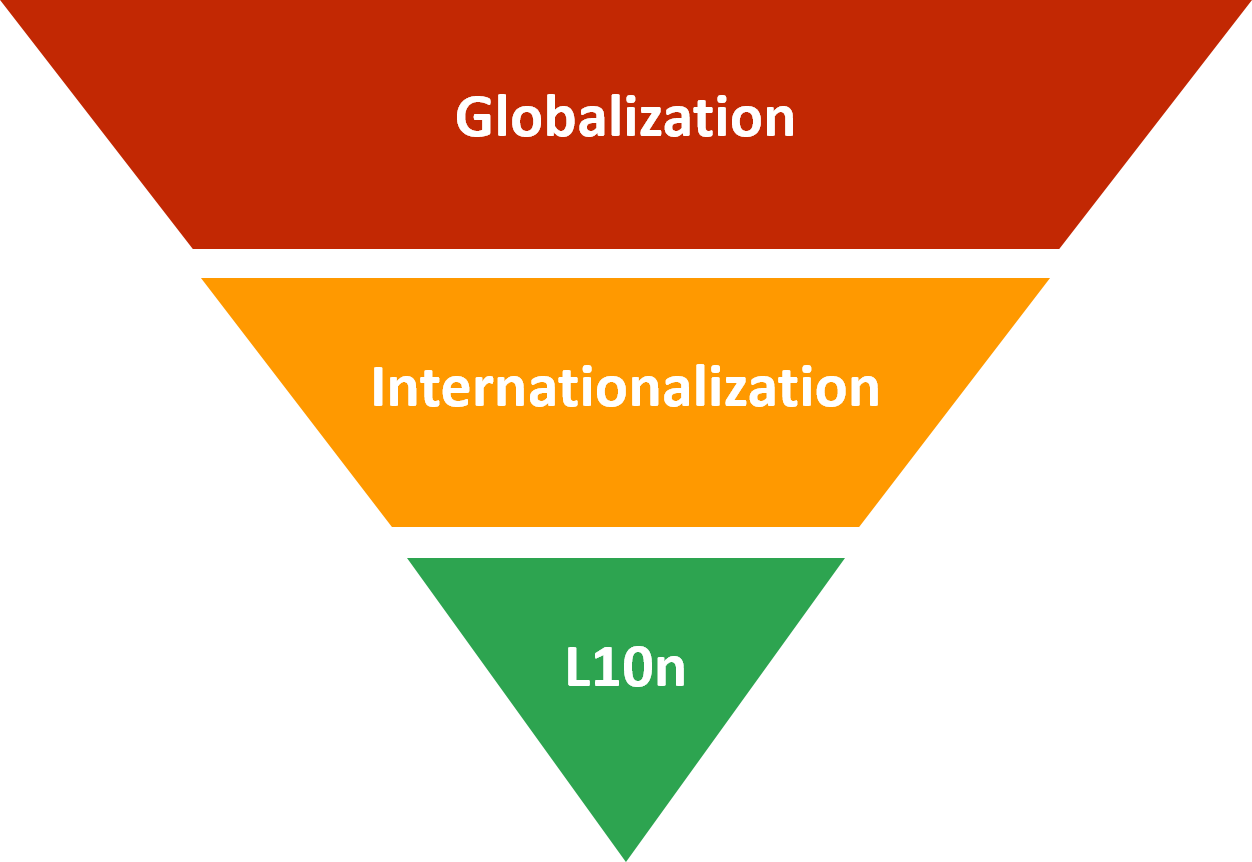
Globalization (G11n): Expansion of marketing strategies to address regional requirements of all kinds.
(Richard Sikes)
Globalization refers to all the business decisions and activities required to make an organization truly international in scope and outlook. In other words, globalization is the transformation of business and processes to support customers around the world, in whatever language, country, or culture they require.

Many are quite critical towards Globalization, because it basically means that cultural differences are being levelled, but this is a discussion for another time.
Internationalization (I18n): The design and development of a product, application or document content that enables easy localization for target audiences that vary in culture, region, or language.
Once you have decided your strategy, you need to design your product or service in a way that makes it easily localizable, that is, you need to design it, so that it can be exported without any major problems.

This somewhat innocuous picture of a plug is in fact a very clear example of internationalization. Rather than producing a different power supply for each country, each with its own plug, the producers separated the cable from the power supply, so they only need to produce different cables for each country instead of entire power supplies. It's a very successful internationalization choice.
How, you might ask, does this apply to web localization? Well, rather than having translatable content spread out over hundreds of files, you should follow best practices and keep everything in a single (if possible) localizable file.
Localization (L10n): Taking any product or service created in one locale and making it relevant to the local culture in another. (Multilingual Computing)
And finally, once you have defined your strategy and designed your product or service the right way, you are ready to localize it. In other words, "localization is the process of modifying products or services to account for differences between markets."
Web localization, on the other hand, is the process of modifying a website to account for differences between markets. Imagery, colours, tone of voice, choice of icons etc will often need to be modified in order to reach a different audience.
Now that we know a little about the theory, let's look at how NOT to deal with translations. (To err is human, but to persist in error is diabolical.)
First mistake: ignoring your target market

You need a global strategy. Know your target market before you decide to translate your site.
A colleague of mine was once requested to translate a site to "African". I hate to break it to you, but there are 54 countries in Africa. What's more, there are an estimated 1500-2000 languages used in Africa. To give an example, 73 languages are spoken in Mali alone. Please, do your homework before requesting a translation…
Luckily enough, the top ten languages used by the internet population account for 77% of the world internet users.
These languages are:
English, Chinese, Spanish, Arabic, Portuguese, Indonesian / Malay, French, Japanese, Russian, and German.
You can find these statistics on Internet World Stats.com
Second mistake: aiming too high
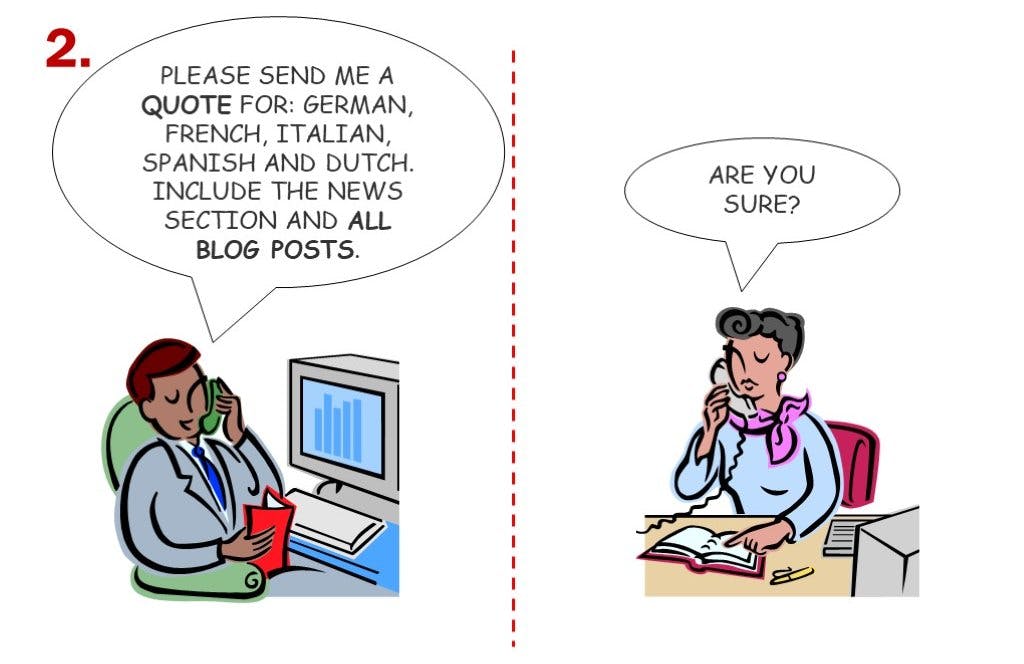
Most customers don't have an accurate idea of how expensive and complicated translation services really are. We usually charge by the word. So, the more content you have, the more you pay. If you manage to strip down the number of words, you will pay less. This will also be a great benefit for your site usability: write less, because online users tend not to read - they skim contents.
You should consider which content is useful for your goals and aligned to your business. For instance, there is no need to translate old blog posts or pieces of news that's irrelevant to the target country. You might want to create a smaller, simpler site for your international audience, rather than a 1:1 replica of your main site. Consider that translation is quite expensive. Translating a single page (450 words) to a common European language can cost you more than 50 dollars.
Think about what really matters to your international audience. Consider having different content for different audiences.
Error number 3: not giving proper access to the site content.
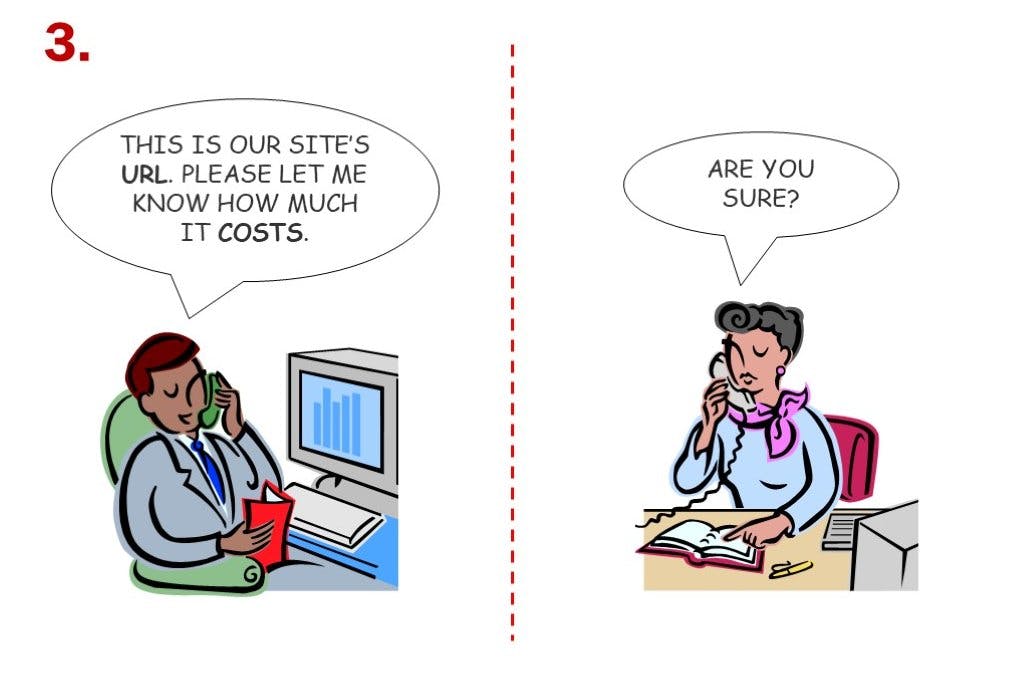
"This is our site's url. Please let me know how much it costs." This is probably the most typical request that we receive.
The worst way of asking for a web site quote is by giving a URL only. How will I know which pages you want translated? How can you calculate an accurate word count without copying and pasting?
What about the pages that are automatically created by the system (that are not easily discoverable)? For instance, the checkout pages in an e-commerce system? How can I quote the error texts that appear during a checkout? What if you add texts to the site the day after I quote it?
A translator will expect to receive the actual texts themselves. File format is open to discussion. We can actually translate almost every file format, so that's usually not an issue.
Work together with your language specialists. If you want results, someone on your side should be involved. Like we've seen, a site is much more than a set of static pages.
Error number 4: underestimating translation tasks
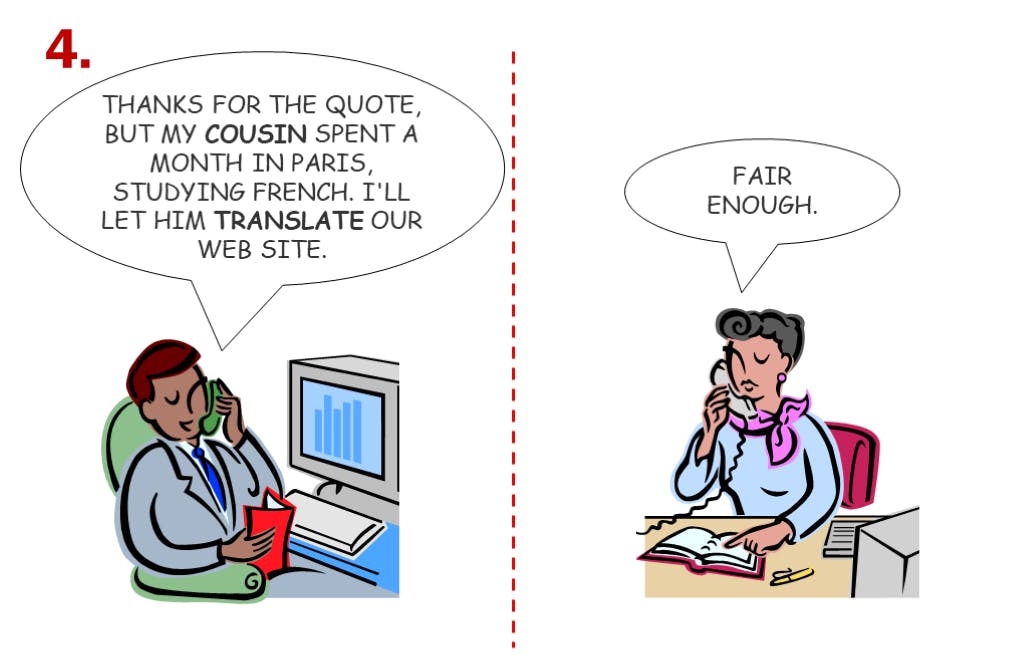
We are used to putting a text into Google Translate and getting a result, sometimes good, sometimes not so good… However, when it comes down to it, translation is still a manual task done by humans, and it takes time. On average, a translator can translate around 2-3000 words daily (8 hours). However, this also depends on the language pair, how difficult the text is, etc. (If you want a ballpark figure, check our Qalculator)
So, as a linguist, my recommendation is to hire trusted professionals.
Your cousin might be ok for getting the gist of a quick message. Your web site deserves more.
Error number 5: the set-and-forget attitude
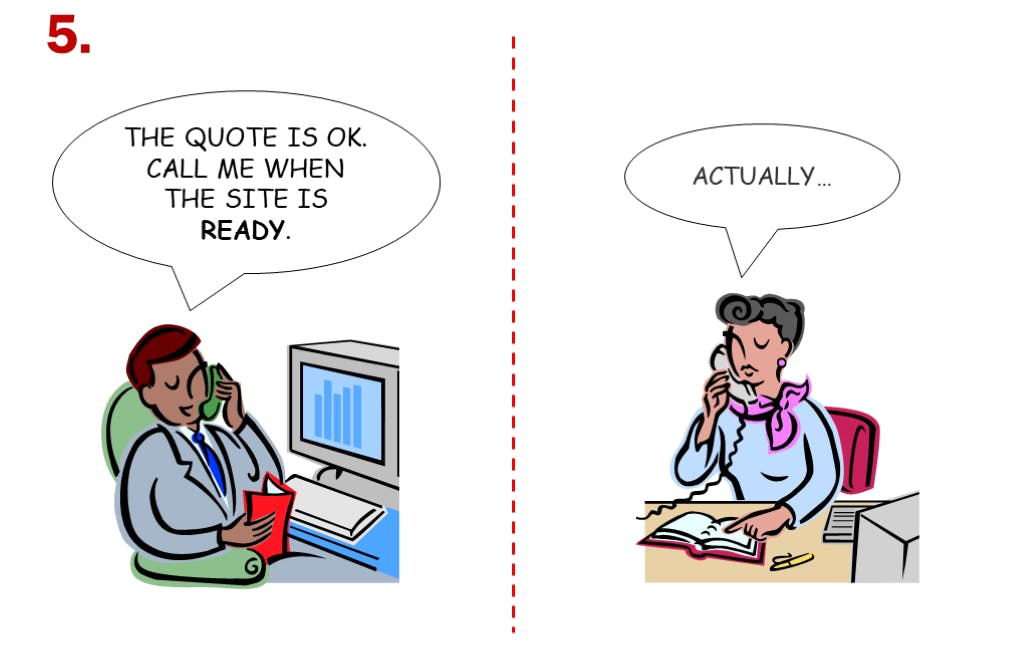
Don't simply abandon your linguist once you have accepted the quote and the project has started. Keep a communication channel open.
Be ready to talk to the translators, if they have questions. A translator is constantly looking for "context". When we translate a long list of threads without a clear context, we might get the meaning wrong. So, always have a person always available to answer questions and work together with the linguists. Using a simple chat or a forum is fine if you don't want to rely on emails back and forth.
| Don't | Do |
| Ignore your target market | Have a global strategy |
| Aim too high | Think about what matters to your international audience |
| Give a simple URL to quote | Work together with professional linguists |
| Underestimate translation tasks | Hire trusted professionals |
| Keep a set-and-forget attitude | Keep a communication channel open |
And always remember that "Each web site is different".
If you want to internationalize your website, get in touch with me. I can help you!

